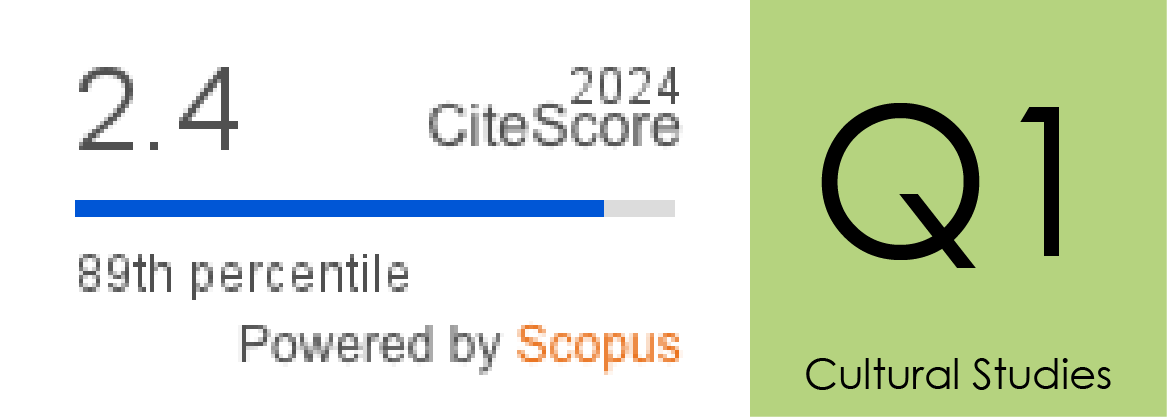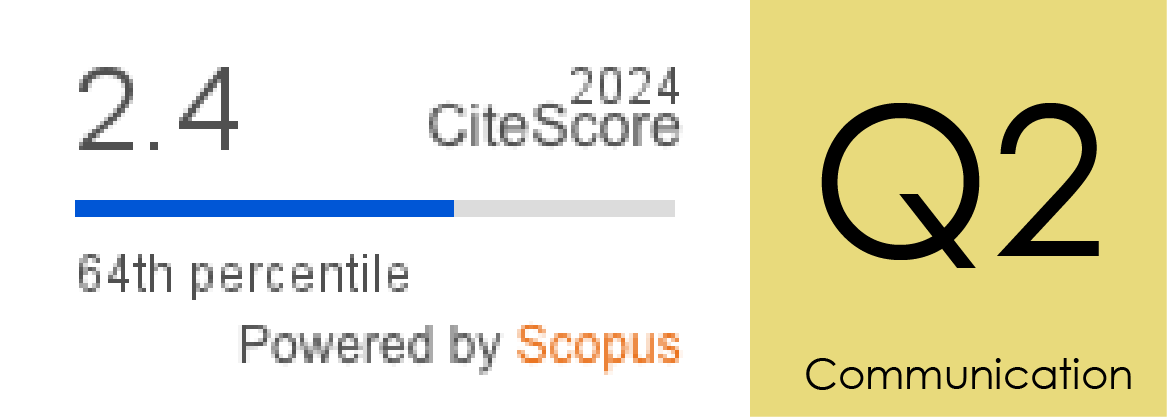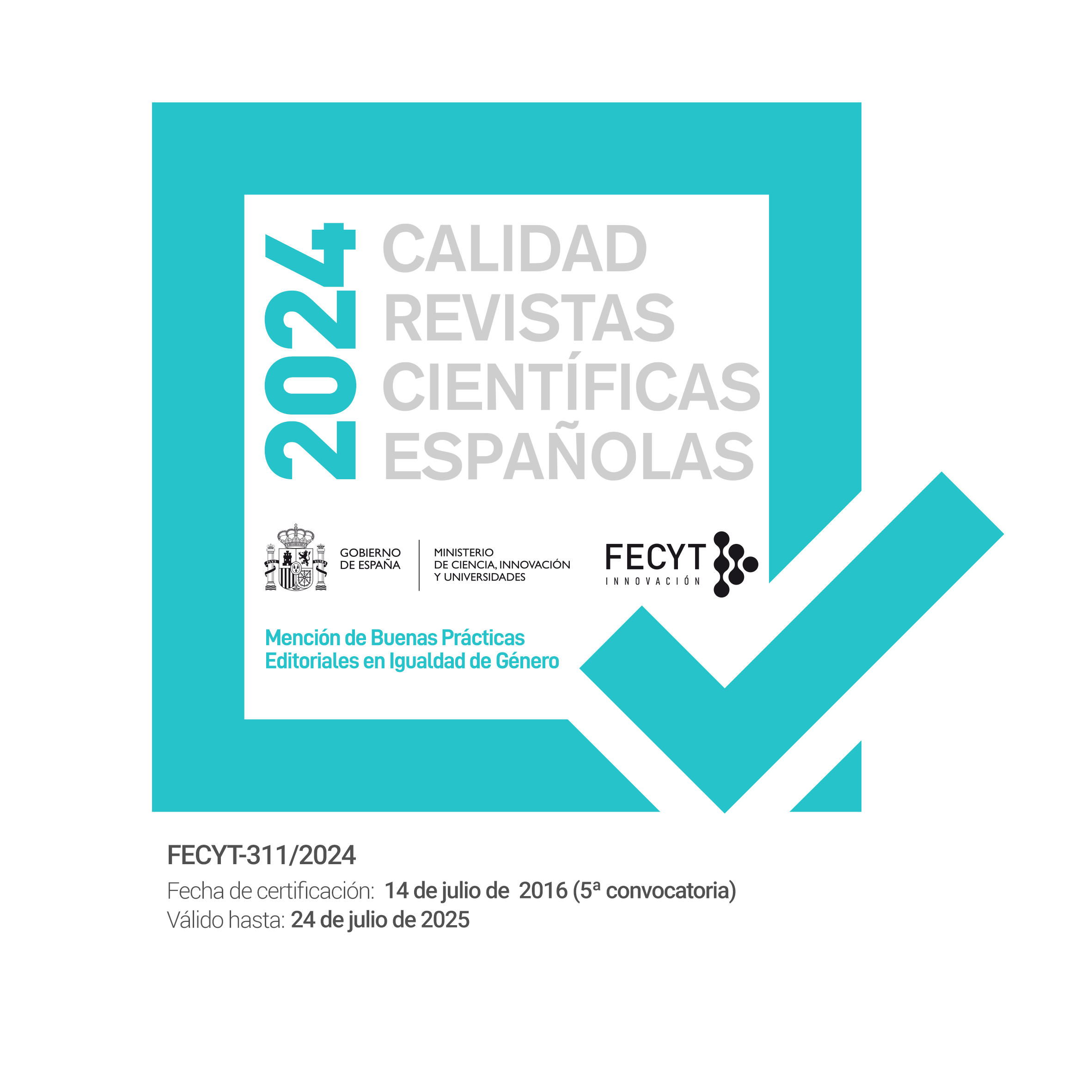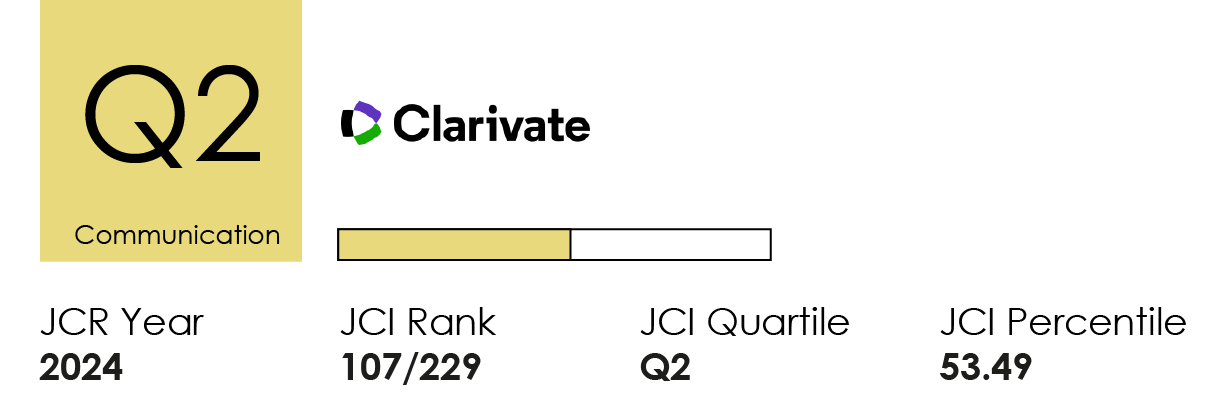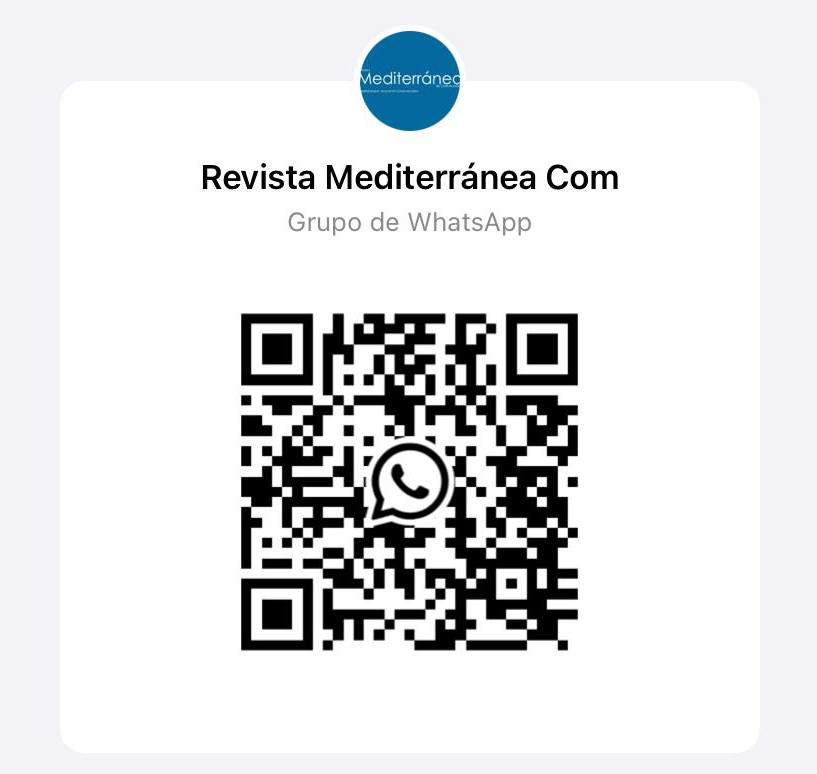Los NFT en las industrias creativas digitales: revisión teórica sobre su impacto, aplicación y desafíos
DOI:
https://doi.org/10.14198/MEDCOM.29327Palabras clave:
blockchain, industrias culturales, NFT, arte digital, cultura digital, propiedad digital, economía creativaResumen
El presente artículo analiza el impacto de los tokens no fungibles (NFT) en la cultura digital contemporánea. Propósito. Se busca comprender el rol de los NFT desde la perspectiva de la hibridación entre el arte y las ciencias sociales, evaluando sus aplicaciones y su intersección con diferentes formatos culturales. Metodología. Se realizó una revisión crítica y exhaustiva de la literatura científica existente, aplicando criterios de inclusión y exclusión mediante el protocolo PRISMA para garantizar la validez de los estudios analizados. Resultados y conclusiones. Se evidencia que los NFT poseen un alto potencial para transformar la cultura digital, facilitando nuevas formas de propiedad, autenticidad e interacción en sectores como el arte, la música y los videojuegos. No obstante, también presentan desafíos en términos de regulación, sostenibilidad y especulación financiera. Aportación original. Este estudio destaca la relevancia de los NFT en las industrias creativas actuales, analizando su viabilidad como herramienta de gestión cultural y su papel en la redefinición del concepto de propiedad digital en un entorno descentralizado.
Financiación
Mykolas Romeris UniversityCitas
Akpan, D.M. (2024). NFTs – Comparing to Existing Metaverse Like Video Games: Fortnite. Future-Proof Accounting, 71, 39-48. https://doi.org/10.1108/978-1-83797-819-920241006
AlKhader, W., Jayaraman, R., Salah, K., Sleptchenko, A., Antony, J., & Omar, M. (2023). Leveraging blockchain and NFTs for quality 4.0 implementation in digital manufacturing. Journal of Manufacturing Technology Management, 34(7), 1208-1234. https://doi.org/10.1108/JMTM-05-2023-0172
Antonopoulos, A. M., & Wood, G. (2018). Mastering Ethereum: Building Smart Contracts and DApps. O'Reilly Media.
Ante, L. (2021). The non-fungible token (NFT) market and its implications for blockchain and digital assets. Journal of Risk and Financial Management, 14(11), 552. http://dx.doi.org/10.2139/ssrn.3861106
Attaran, M., & Gunasekaran, A. (2019). Applications of Blockchain Technology in Business. Challenges and opportunities. Springer. https://doi.org/10.1007/978-3-030-27798-7_12
Bamakan, S. M. H., Nezhadsistani, N., Bodaghi, O., & Qu, Q. (2022). Patents and intellectual property assets as non-fungible tokens; key technologies and challenges. Scientific Reports, 12(1), 2178. https://doi.org/10.1038/s41598-022-05920-6
Bermejo Blas, A., & Montes Vozmediano, M. (2015). Análisis de la identidad visual de las principales empresas del sector de la fotografía digital. Revista Mediterránea De Comunicación, 6(2), 181–194. https://doi.org/10.14198/MEDCOM2015.6.2.09
Blanco Pérez, M. (2022). El discurso fotográfico en los premios World Press Photo (1955-2021): tecnología, política y medios. Revista Latina de Comunicación Social, 80, 241-258. https://www.doi.org/10.4185/RLCS-2022-1543
Boido, C., & Aliano, M. (2023). Digital art and non-fungible-token: Bubble or revolution? Finance Research Letters, 52, 103380. https://doi.org/10.1016/j.frl.2022.103380.
Buterin, V. (2014). Ethereum white paper: A next-generation smart contract and decentralized application platform. Ethereum Foundation.
Buterin, V. (2015). A next-generation smart contract and decentralized application platform. Ethereum White Paper. https://ethereum.org/en/whitepaper/
Buterin, V. (2020). The road to Ethereum 2.0. Ethereum Blog. [Blog] https://lc.cx/ColYUK
Çağlayan Aksoy, P., & Özkan Üner, Z. (2021). NFTs and copyright: challenges and opportunities. Journal Of Intellectual Property Law and Practice, 16(10), 1115-1126. https://doi.org/10.1093/jiplp/jpab104
Caldwell, J. (2024, December 26). Top NFT Marketplaces: 25 Best Websites to Buy & Sell NFT in 2025. Ninjapromo. https://shorturl.at/2SZ0X
Cardona, N. J. (2024). El «uso transformador» de las empresas de IA: entre la libertad creativa y los derechos de propiedad intelectual. IDP. Revista de Internet, Derecho y Política, 40, 1-11. https://doi.org/10.7238/idp.v0i40.421926
Casale-Brunet, S., Zichichi, M., Hutchinson, L., Mattavelli, M., & Ferretti, S. (2022). The impact of NFT profile pictures within social network communities. In Proceedings of the 2022 ACM Conference on Information Technology for Social Good (pp. 283-291). https://doi.org/10.1145/3524458.354723
Celle, R. (2022). NFTS y la nueva visión de los negocios anclados en la tecnología blockchain. Palermo Business Review, 25, 59-70. https://lc.cx/5Q__iq
Chen, Y., & Bellavitis, C. (2020). Blockchain disruption and decentralized finance: The rise of decentralized business models. Journal of Business Venturing Insights, 13, e00151. https://doi.org/10.1016/j.jbvi.2019.e00151
Chen, Y., Huang, W., & Zheng, Z. (2022). Blockchain-based non-fungible token (NFT) markets: A survey of concepts, applications, and challenges. Future Internet, 14(2), 50. https://doi.org/10.1145/3626315
Colle, R. (2017). Blockchain para periodistas y medios de comunicación. INCOM Chile.
ConsenSys. (2021). NFT: The definitive guide to non-fungible tokens. ConsenSys Blog. [Blog]. https://consensys.net/blog/
Creswell, J. W., & Creswell, J. D. (2018). Research design: Qualitative, quantitative, and mixed methods approaches. SAGE.
Cruzado, V. (2025). WisdomTree desgrana las cinco tendencias en criptomonedas que marcarán 2025. Expansión. https://lc.cx/IwBHAb
DappGamble (2023). Dead NFTs: The Evolving Landscape of the NFT Market. https://lc.cx/iYUWsT
De Filippi, P., & Wright, A. (2018). Blockchain and the Law: The Rule of Code. Harvard University Press.
De Vries, A. (2021). Bitcoin's growing energy problem. Joule, 2(5), 801-805. https://doi.org/10.1016/j.joule.2018.04.016
Deltell, L. (2024). Parar y mirar, las imágenes se muestran [Reseña]. Revista Mediterránea De Comunicación, 15(2), e27665. https://doi.org/10.14198/MEDCOM.27665
Deventer, C., de Sousa, V. A., & Pirnay, L. (2024). NFTbyBrands: Value identification framework for analysis and design of NFT initiatives. International Journal of Electronic Commerce, 28(1), 33-62. https://doi.org/10.1080/10864415.2023.2295070
Dowling, M. (2022a). Is non-fungible token pricing driven by cryptocurrencies? Finance Research Letters, 44, 102097. https://doi.org/10.1016/j.frl.2021.102097
Dowling, M. (2022b). Fertile LAND: Pricing non-fungible tokens. Finance Research Letters, 44, 102096. https://doi.org/10.1016/j.frl.2021.102096
Ferro, E., Saltarella, M., Rotondi, D., Giovanelli, M., Corrias, G., Moncada, R., Cavallaro, A., & Favenza, A. (2023). Digital assets rights management through smart legal contracts and smart contracts. Blockchain: Research and Applications, 4(3), 100142, https://doi.org/10.1016/j.bcra.2023.100142
Fink, A. (2019). Conducting research literature reviews: From the internet to paper. SAGE.
Foundation. (2023). About Foundation. https://foundation.app
García-Cisneros, E. & Parejo, N. (2024). De la hegemonía del cine a la diversidad digital: estudios audiovisuales contemporáneos. En Jurado Martín, M. & Aranzubia, A. y López Gutiérrez, M. L. (Coords.). De la hegemonía del cine a la diversidad digital. Estudios audiovisuales contemporáneos (pp. 187-212). Tirant Humanidades.
García-Monleon, F., Erdmann, A., Llorente, R. A., & Hernández, R. F. (2022). Adopción de NFT como arte digital: El efecto moderador de la cripto-experiencia y el papel de la sostenibilidad. Techno Review. International Technology, Science and Society Review, 11(4), 1-11. https://doi.org/10.37467/revtechno.v11.4428
Gordillo, V. (2020). Blockchain y protección de datos. Revista Estudiantil de Derecho Privado, 7. https://goo.su/zBtiOo
He, Y., Li, W., Liu, L., & He, W. (2023). NFTs–a game changer or a bubble in the digital market? Journal of Global Information Technology Management, 26(1), 1-8. https://doi.org/10.1080/1097198X.2023.2167561
Jhally, S. (2022). The political economy of culture. In Cultural politics in contemporary America (pp. 65-81). Routledge.
Jiménez-Marín, G. & Checa Godoy, A. (2021). Teoría y práctica del consumo. Síntesis.
John, K., Monnot, B., Mueller, P., Saleh, F., & Schwarz-Schilling, C. (2025). Economics of ethereum. Journal of Corporate Finance, 91, 102718. https://doi.org/10.1016/j.jcorpfin.2024.102718
Jones, N. (2021). How scientists are embracing NFTs. Nature, 594, 481-482. https://doi.org/10.1038/d41586-021-01642-3
Kräussl, R., & Tugnetti, A. (2024). Non‐fungible tokens (NFTs): A review of pricing determinants, applications and opportunities. Journal of Economic Surveys, 38(2), 555-574. https://doi.org/10.1111/joes.12597
Kugler, L. (2021). Non-fungible tokens and the future of digital ownership. Communications of the ACM, 64(9), 19-20. 10.1145/3474355
Kumar, M. & Thakur, A. (2024). NFTS, Blockchain and Cryptocurrency: Legal Scenario Across the Globe. In J. Aston, A. Tomer, & R. Singh (eds), Comparative Law. Springer (pp. 73-86). https://doi.org/10.1007/978-981-97-7815-7_5
Lacruz Mantecón, M. L. (2021). Inteligencia artificial y derecho de autor. Editorial Reus.
Laucius, G. (2023). Naujasis kriptoturto veiklos reglamentavimas Lietuvoje ir Europos Sąjungoje. Teisé, 128, 115–132. https://doi.org/10.15388/Teise.2023.128.8
LooksRare. (2023). Welcome to LooksRare. https://looksrare.org
Luco-Rojas, N. (2018). Blockchain para periodistas y medios de comunicación. Revista Mediterránea De Comunicación, 9(1), 495–496. https://doi.org/10.14198/MEDCOM.11700
Machi, L. A., & McEvoy, B. T. (2022). The literature review: Six steps to success. Corwin Press.
Magic Eden. (2023). What is Magic Eden? https://magiceden.io
Martín-Núñez, M., García-Catalán, S., y Marzal-Felici, J. (2022). Puntos ciegos, mirada afiladas. Discursos fotográficos y prácticas artísticas para hackear la posverdad. Tirant humanidades.
McDonald, C. (2017). A Brief History of Advertising. In Tellis, G., & Ambler, T. (ed.). Handbook of Advertising. Sage Publications.
Moher, D., Liberati, A., Tetzlaff, J., & Altman, D. G. (2009). Preferred reporting items for systematic reviews and meta-analyses: The PRISMA statement. PLOS, 6(7), e1000097. https://doi.org/10.1371/journal.pmed.1000097
Moro-Visconti, R. (2024). Are NFTs Sustainable? An ESG Perspective. In Non-Fungible Tokens (pp. 72-86). Routledge.
Nadini, M., Alessandretti, L., Di Giacinto, F., Martino, M., Aiello, L. M., & Baronchelli, A. (2021). Mapping the NFT revolution: Market trends, trade networks, and visual features. Scientific Reports, 11(1), 20902. https://doi.org/10.1038/s41598-021-00001-0
Nakamoto, S. (2008). Bitcoin: A peer-to-peer electronic cash system. https://bitcoin.org/bitcoin.pdf
Narayanan, A., Bonneau, J., Felten, E., Miller, A., & Goldfeder, S. (2016). Bitcoin and cryptocurrency technologies. Princeton University Press.
Nifty Gateway. (2023). About Nifty Gateway. https://niftygateway.com
OpenSea. (2023). The world’s first and largest NFT marketplace. https://opensea.io
Ortiz-González, J. C. (2023). Ensamblar en anonimidad. Sentidos de la acción en colecciones de NFT: caso CryptoPunks. Revista Colombiana de Sociología, 46(2), 105-130. https://doi.org/10.15446/rcs.v46n2/104976
Patrickson, B. (2021). What do blockchain technologies imply for digital creative industries? Creativity and Innovation Management, 30(3), 585-595. https://doi.org/10.1111/caim.12456
Peters, Z., & Cartwright, P. (2023). A Perspective on NFTs in the Arts-and-Music Industry. International Journal of Music Business Research, 12(2), 57-77. 10.2478/ijmbr-2023-0006
Poposki, Z. (2024). Crypto-aesthetics: towards a New Materialist theory of NFT art. Journal of Visual Art Practice, 1-18. https://doi.org/10.1080/14702029.2024.2393554
Regner, F., Urbach, N., & Schweizer, A. (2019). NFTs in practice: Non-fungible tokens as core component of a blockchain-based event ticketing application. In Proceedings of the 40th International Conference on Information Systems (pp. 1-17). https://lc.cx/CavseA
Rodríguez-Monteagudo, E., & Olivares-Delgado, F. (2017). La cultura corporativa en las industrias creativas del Arco Mediterráneo en España a través de un análisis Delphi. Revista Mediterránea de Comunicación, 8(2), 189–223. https://doi.org/10.14198/MEDCOM2017.8.2.13
Roy, S. S., Das, D., Bose, P., Kruegel, C., Vigna, G., & Nilizadeh, S. (2024). Unveiling the risks of NFT promotion scams. In Proceedings of the International AAAI Conference on Web and Social Media, 18, (pp. 1367–1380). https://doi.org/10.1609/icwsm.v18i1.31395
Szadkowski, M. (2025). Au salon NFT Paris, l’élan français pour l’intelligence artificielle électrise les disciples de la blockchain. Le Monde. https://lc.cx/Zrp4kt
Sestino, A., Guido, G., & Peluso, A. M. (2022). Non-fungible tokens (NFTs). Examining the impact on consumers and marketing strategies. Palgrave. https://doi.org/10.1007/978-3-031-07203-1_3
Shaji, N., Madaan, N., & Tuteja, S. (2022). Blockchain and nfts: future of video games. NeuroQuantology, 20(12), 2868. 10.14704/NQ.2022.20.12.NQ77282
Soares, M. N., Kauffman, M. E., & Berlanga, K. M. R. N. (2024). Legal challenges in the commercialisation of NFTS: a comparative analysis of Europe and Brazil. Revista Tecnologia e Sociedade, 20(61), 359-378. http://dx.doi.org/10.3895/rts.v20n61.17795
SuperRare. (2023). About SuperRare. https://superrare.com
Swan, M. (2015). Blockchain: Blueprint for a new economy. O'Reilly Media.
Synodüs. (2024). Top 15 best art NFT marketplaces designed for artists. [Blog]. https://shorturl.at/R35eU
Tan, G. K. S. (2025). Assetizing the Video Game: Play-to-Earn (P2E) Games and Blockchain Rentiership. Progress in Economic Geography, 151, 104009. https://doi.org/10.1016/j.geoforum.2024.104009
Tavares, R., Sousa, J. P., Maganinho, B., & Gomes, J. P. (2023). Gamers' Reaction to the Use of NFT in AAA Video Games. Procedia Computer Science, 219, 606-613. https://doi.org/10.1016/j.procs.2023.01.329
Van Haaften-Schick, L., & Whitaker, A. (2022). From the artist’s contract to the blockchain ledger: New forms of artists’ funding using equity and resale royalties. Journal of Cultural Economics, 46(2), 287-315. https://doi.org/10.1007/s10824-022-09445-8
Vismaya, V. (2025). Mercado NFT alcanza mínimo de tres años en volumen de negociación y ventas: Informe. R/SCENE. https://lc.cx/f6hYm2
Voshmgir, S. (2020). Token economy: How the Web3 reinvents the Internet. Token Kitchen.
Wang, Q., Li, R., Wang, Q., & Chen, S. (2021). Non-fungible token (NFT): Overview, evaluation, opportunities and challenges. Journal of Business Research, 136, 225-236. https://doi.org/10.48550/arXiv.2105.07447
Wiratno, T. A., & Callula, B. (2024). Transformation of beauty in digital fine arts aesthetics: An artpreneur perspective. Aptisi Transactions on Technopreneurship (ATT), 6(2), 231-241. https://doi.org/10.34306/att.v6i2.395
Yaseen, K., & Batur, M. (2024). The impact of nft technology on digital art: revolutionizing exhibition, preservation, distribution, communication, and artistic possibilities. Safran Kültür ve Turizm Araştırmaları Dergisi, 7(3), 423-433. https://lc.cx/35xcXM
Descargas
Estadísticas
Publicado
Cómo citar
Número
Sección
Licencia
Derechos de autor 2018 Isabel Palomo-Domínguez, Miglė-Eleonora Černikovaitė, Gloria Jiménez-Marín

Esta obra está bajo una licencia internacional Creative Commons Atribución 4.0.
Los autores y autoras que publican en esta revista están de acuerdo con los siguientes términos:
1 Derechos de autor. Los autores y autoras conservan sus derechos de autor, aunque ceden a la revista de forma no exclusiva los derechos de explotación (reproducción, distribución, comunicación pública y transformación) y garantizan a esta el derecho de primera publicación de su trabajo, el cual estará simultáneamente sujeto a la licencia indicada en punto 2. Los autores pueden establecer otros acuerdos adicionales para la distribución no exclusiva de la versión de la obra publicada en la revista, siempre que exista un reconocimiento de su publicación inicial en esta revista.
© Los autores.
2 Licencia. Los trabajos se publican en la revista sujetos a la licencia de Reconocimiento 4.0 Internacional de Creative Commons (CC BY 4.0); los términos se pueden consultar en https://creativecommons.org/licenses/by/4.0/
Esta licencia permite a terceros compartir (copiar y redistribuir el material en cualquier medio o formato) y adaptar (remezclar, transformar y crear a partir del material para cualquier finalidad, incluso comercial), siempre que se reconozca la autoría y la primera publicación en esta revista (Revista Mediterránea de Comunicación (RMC) / Mediterranean Journal of Communication (MJC), Universidad de Alicante, DOI de la obra), se proporcione un enlace a la licencia y se indique si se han realizado cambios en la obra.
3 Política de autoarchivo. Se recomienda a los autores que difundan sus trabajos a través de Internet para favorecer una circulación y difusión más rápidas y, con ello, un posible aumento en la citación y alcance entre la comunidad científica y académica, en las siguientes condiciones:
No se permite a los autores depositar en un repositorio institucional o temático, página web propia, etc., las versiones preprint (versión antes de ser evaluada) o postprint (versión evaluada y aceptada para su publicación) de sus trabajos antes de su publicación, pero sí el artículo final publicado (versión del editor).


